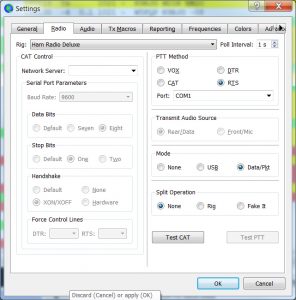Why am I wondering what happened to JT65? The other day I decided to fire up my JT65 software and make some contacts. I had not played with JT65, or any digital modes, in several years but had fond memories of using it. To my astonishment, I could not get it to work. I tested everything I could, reinstalled my sound device, readjusted all the settings, checked my cables, nothing.
I also noticed that the sounds on the JT6 frequencies sounded ‘off’. I could not put my finger on it, but those musical tones I thought I remembered just sounded different somehow. I chalked this up to bad reception and decided to try it again on another day.
A few days later I fired it up and had the same exact problems, and no solutions to be found. That is until I looked through a lot of online forums and discovered that virtually no one was talking about JT65 anymore, it was all FT8.
Those weird sounds on the JT65 frequencies? FT8. That’s good to know, but still doesn’t explain what happened to JT65.
Why the switch from JT65 to FT8
JT65 was a great protocol that got me a lot of contacts so I was a little confused how its popularity could go from massive to non-existent in just a few years. I downloaded WSJT-X and started playing with it on FT8 to come up with some answers.
The first thing I noticed was there was a lot more settings I needed to take care of so I spent a while going through the settings and figuring out what would work with my Kenwood TS-570D and Ham Radio Deluxe 5.x. This increase in the number of settings and their complexity seem to stem from the fact that FT8 (or at least when using WSJT-X) can do a lot more such as working in split mode automatically.
After dealing with setup what I found was an extremely automated and fast QSO experience. You find someone on the left side of the screen calling CQ and double click that line telling the system to send them something like KC5VSU WD1R R-02. They respond with something like WD1R KC5VSU -05 RR to which your system automatically replies KC5VSU WD1R 73, and finally they send WD1R KC5VSU 73. The whole process takes about a minute as compared to JT65 which would take 30 seconds per cycle or about three minutes in a perfect QSO.
So right there are two reasons people are moving from JT65 to FT8, much faster QSO times and almost complete automation. Those faster QSO times also mean you can run more power without having to worry about overheating your finals and ruining your radio. It is not unusual for me to run 50-60 watts output on FT8 where with JT65 I would keep it between 20-30 watts. That, in a nutshell, is what happened to JT65.
Making the switch to FT8
The good news is that if you were using JT65 previously, running FT8 is a pretty easy switch. The same hardware (such as my Signalink USB) and interfaces are used so there is nothing new there and nothing new to buy.
One place I had problems was with the radio configuration in WSJT-X which I have shown here:

Since I use Ham Radio Deluxe version 5.x (the last free version) I have the radio type set to Ham Radio Deluxe in the drop down at the top left. Next I selected RTS as my PTT. Following this are the two most important parts; Mode being set to Data and Split being set to None.
I want to explain split for a moment. When stations are handling a lot of traffic they sometimes will work in split mode where you receive on one frequency and transmit on another. This makes sure that one party does not transmit over the top of the other. This is more often used with DX contacts than local contacts in the US. So why have I turned it off?
My problem is not with the idea of working split, but with the implementation when using WSJT-X, HRD, and my Kendwood. For whatever reason when I use either Rig or Fake It modes the frequency tends to “walk”. What this means is that the first time it transmits it moves to the correct transmit frequency but then stays there when it switches back to receive mode. When the next transmit cycle comes back around it moves up another step and then again fails to return when it switches back to receive.
This results in frequency steps of up -> up -> up -> up -> up ->, instead of up -> back -> up -> back -> up -> back, so you are continually moving up the dial and never returning to your original frequency. Of course this means that the party you are calling hears your first transmission and then neither you or they ever hear from each other again.
If I need to work split I can always set it using the front buttons on my radio so I do not use it here.
Conclusions
So now you know what happened to JT65 and have some idea of where you can go from here.
73s!

